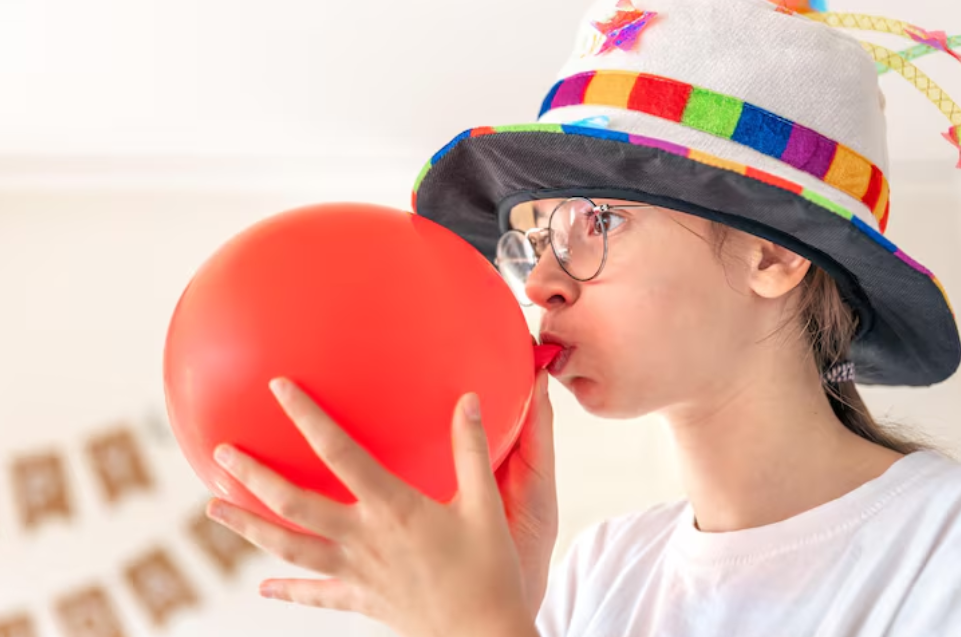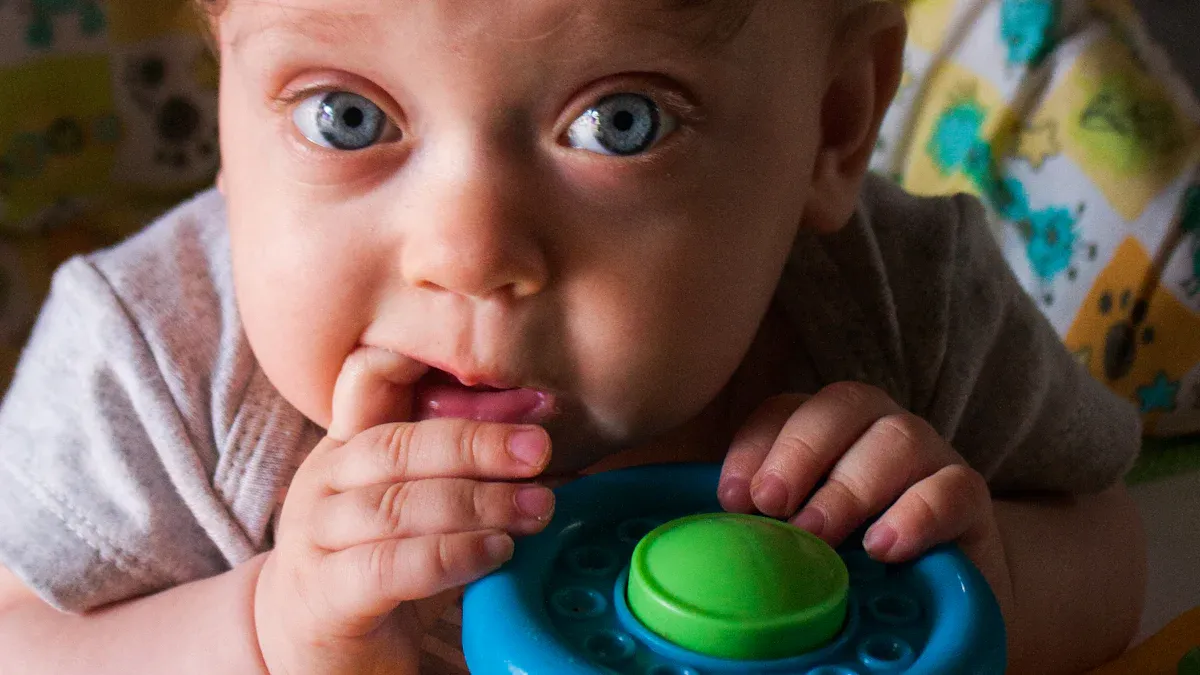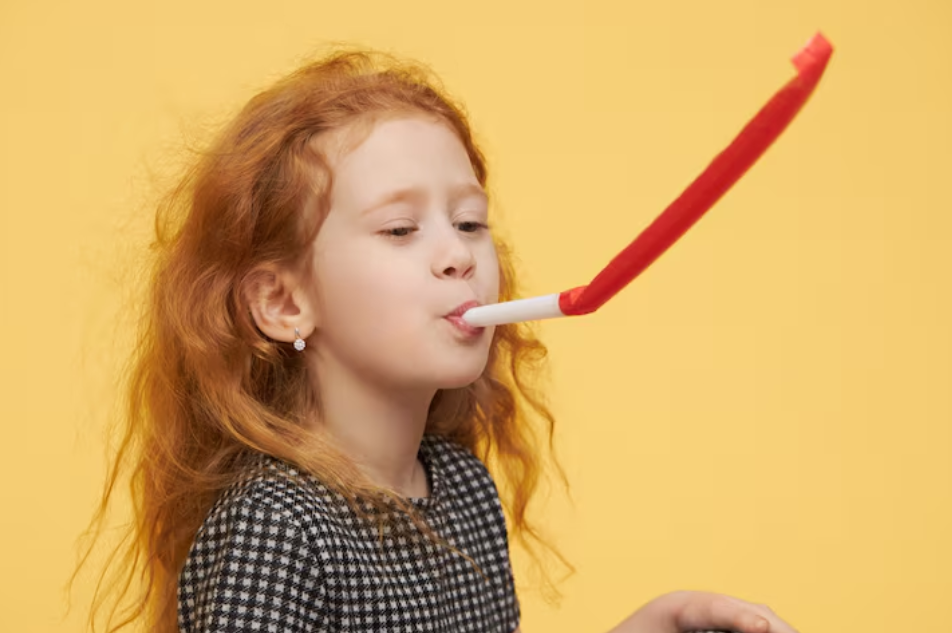Occupational Therapists’ Favorite Sensory Mouth Toys for Kids

You want the best for your child, especially when it comes to their sensory needs. If you notice your child chewing on objects or seeking oral input, you are not alone. Sensory mouth toys can help. These tools do more than just keep little mouths busy. They stimulate and strengthen oral muscles, which helps with feeding and speaking. Many children feel calmer and more focused when they use these toys. You might also see better control in their oral movements, which is important for daily life.
Key Takeaways
Sensory mouth toys help kids with oral sensory needs. They keep kids safe and help them stay calm. These toys can also help kids focus better.
Chewelry, chew sticks, and silicone necklaces are common choices. They let kids chew safely and come in many shapes and textures.
Pick toys made from non-toxic materials for safety. Make sure the toys follow FDA rules. Check toys often for damage to avoid choking risks.
Use sensory mouth toys in daily routines. This helps kids learn good chewing habits. It also helps with oral motor skills.
Talk to an occupational therapist for advice. They can help you choose the best toys for your child’s needs.
Top Sensory Mouth Toys

When you pick sensory toys for your child, you want them to be safe and fun. Occupational therapists have some favorites they often suggest. Let’s look at the most popular sensory mouth toys and see how each one helps your child.
Chewelry
Chewelry is jewelry you can chew on. It comes as bracelets or necklaces. These look like normal accessories but are made for chewing. Many kids like chewelry because it feels soft and bends easily. You can pick from many shapes, colors, and textures.
Chewelry gives your child a safe way to chew.
It stops chewing on clothes, pencils, or fingers.
You can use chewelry at home, school, or anywhere.
Some brands, like the Y-Chew® Oral Motor Chew, have special shapes for certain oral motor skills. These toys help kids with ADHD, Autism, or anxiety.
Chew Sticks
Chew sticks are simple but very helpful. Give one to your child when they want to chew. They come in different firmness levels, so you can choose what your child likes. Many chew sticks have bumpy surfaces for extra sensory feedback.
Chew sticks help kids who need strong oral input.
They are easy to clean and take with you.
You can use them during homework, car rides, or therapy.
Chew sticks are a good pick if your child needs something tough and steady.
Silicone Necklaces
Silicone necklaces are strong and work well as sensory toys. They are made from food-grade, non-toxic silicone. Many parents like these necklaces because they are safe for daily use.
They help lower anxiety and stop unsafe chewing.
You can find them in many shapes, textures, and colors.
Kids can wear them all day for steady support.
Tip: Always pick silicone necklaces marked 'FDA-compliant' for oral use. This keeps your child safe.
Silicone necklaces let kids self-soothe in a quiet way. They give a safe way to chew and help kids chew on the right things.
Pencil Toppers
Pencil toppers turn pencils into sensory tools. You put them on the end of a pencil, and your child can chew while working. This helps many kids focus better in class.
Here’s a quick look at how pencil toppers and oral motor tools compare:
Tool Type | Sensory Benefits |
|---|---|
Pencil Toppers | Give a safe way to chew, helping with focus and self-control. |
Oral Motor Tools | Help with oral motor skills, make jaws stronger, and help with sensitivities using different textures. |
Pencil toppers are great for school. They let your child meet sensory needs quietly and safely.
Oral Motor Tools
Oral motor tools are special toys used in therapy. They come in many shapes and textures. Some look like spoons, tubes, or animals. You can use them to help your child build jaw strength and move their tongue better.
Oral motor tools help with speech and feeding.
They help kids with oral sensitivities.
You can use them in therapy or at home with help from a professional.
These toys are good for kids who need extra help with oral motor skills.
Textured Chews
Textured chews give even more sensory input. They come in shapes like tubes, rings, or animals. The different textures give your child more feedback when chewing.
Textured chews help kids who want strong or different sensations.
They make chewing more fun and interesting.
Many kids use them to calm down or focus.
You can add textured chews to your child’s sensory tools for more choices. They work well with other toys and help stop unsafe chewing.
Note: Always watch your child when they use sensory mouth toys. Check them often for damage and replace them if needed.
Sensory mouth toys give kids safe ways to explore and calm themselves. They also help build important skills. Think about your child’s needs and likes to find the best toy. With so many choices, you can find toys that really help.
What Are Sensory Mouth Toys?
Purpose
You might wonder what sensory mouth toys are. These are special tools made for safe oral stimulation. Instead of chewing on random things, your child can use these toys. This helps them meet their sensory needs in a healthy way. There are many choices, like chewy necklaces, pencil toppers, and textured sticks. Some kids also like chewing gum, eating crunchy snacks, or drinking thick smoothies with a straw. These activities give oral input too, but sensory mouth toys are safer and more steady.
When your child uses sensory mouth toys, they avoid unsafe mouthing. Chewing on clothes, pencils, or fingers is risky and distracting. Giving chewable items like ARK’s Y-Chews, Grabbers, or wearable necklaces is safer. These toys help your child feel calm and focused. In classrooms, sensory mouth toys can stop disruptive chewing. They help your child pay attention and stay on task.
Tip: Pick toys made from non-toxic materials. Check them often for damage. This keeps your child safe and happy.
Who Benefits
You may wonder if sensory mouth toys are right for your child. Kids with sensory processing challenges, autism, or anxiety often benefit most. These toys help children who want oral stimulation or need help calming down. Sensory mouth toys come in many shapes and textures. You can find one that your child likes.
Here are some groups who benefit from these toys:
Children with autism
Kids with sensory processing disorders
Children who need help with focus or calming down
Sensory mouth toys support your child’s needs. They help your child feel better, lower anxiety, and improve attention. If you are not sure which toy to pick, talk to an occupational therapist. You will get advice that fits your child.
Benefits of Sensory Toys
Focus and Calm
You want your child to stay calm and focus well. Sensory toys can help with this goal. Chewing on sensory mouth toys gives needed oral input. This helps your child relax and pay attention. Many kids with autism or ADHD listen and learn better with these toys.
Here’s a simple chart showing how activities help focus and calm:
Activity Type | Benefits |
|---|---|
Chewable Toys | Give needed oral sensory input |
Straw Drinking | Makes lip and tongue muscles stronger |
Blowing Bubbles | Helps improve oral motor skills |
Sucking on Safe Objects | Calms and helps your child feel safe |
These activities help your child feel steady and ready to learn.
Oral Motor Skills
Sensory toys help build strong mouth muscles. Chewing, blowing, or sucking works the lips, tongue, and mouth. These actions help with feeding and speech therapy. Occupational therapy uses sensory toys to practice mouth movements. This makes eating, talking, and breathing easier.
You may see your child chew food better or say new words. Sensory toys help your child practice motor skills in fun ways every day.
Reducing Anxiety
Sensory toys do more than help with focus and motor skills. They also lower anxiety. Many kids feel nervous in new or loud places. Sensory toys give a safe way to chew and self-regulate. Here’s how these toys help with anxiety:
Safe chewing stops your child from chewing unsafe things.
Rhythmic chewing boosts focus and attention.
Weighted sensory toys can make your child feel safe and comfortable. When your child feels calm, they can handle tough times and enjoy their day.
Choosing Sensory Mouth Toys
Safety
Safety is the most important thing when picking sensory mouth toys. You want your child to chew on toys that are safe and clean.
Choose toys made from non-toxic materials. Make sure they are easy to clean. Look for designs that lower choking risks. Pick chewable aids made from food-grade or medical-grade silicone. These should not have BPA, phthalates, or lead. Make sure the toys can be washed easily. Some toys have breakaway clasps to help prevent choking.
Check for small parts that could break off. Pick toys that are sturdy and strong. If your child chews hard, get extra-tough toys. Watch your child when they use a new toy.
Materials
The material of the toy matters a lot. Some toys use food-grade silicone. Others use medical-grade plastic. You want something strong and safe. Here is a quick chart about what makes a good choice:
Feature | Description |
|---|---|
Product Name | Chew Stixx® Tough Bar |
Durability | Made with high-pressure molding for a strong material. |
Safety Standards | Made in the USA with FDA-approved materials. No silicone or BPA. |
Testing | Tested for strength and safety to meet health standards. |
Pick toys that you can wash easily. This helps keep germs away and keeps your child healthy.
Age Suitability
Not all toys are right for every age. Some toys are best for toddlers. Others work for older kids. Always check the age range on the package. Younger kids need bigger toys with no small parts. Older kids may like smaller toys with more texture. If you are unsure, ask your occupational therapist.
Individual Needs
Every child is unique. Some like soft textures. Others want firm toys. Think about how your child chews and what feels good. Try different shapes and textures to see what works best. If your child needs strong oral input, pick extra-durable toys. You know your child well, but an occupational therapist can help you choose.
Tip: If you are not sure, talk to your child’s therapist. They can help you pick the safest and best sensory toys.
Safe Use Tips
Cleaning
Keeping sensory mouth toys clean helps your child stay healthy. You want to make sure germs do not build up. Here is a simple way to clean these toys:
Wash the toy with soap and water. Remove all visible dirt.
Soak the toy in a bleach solution (use 1 tablespoon of bleach for every gallon of water) for two minutes.
Let the toy air dry completely. Do not rinse after soaking.
If the toy has water inside, follow the instructions from the manufacturer.
Tip: Clean sensory mouth toys at least once a day. If the toy falls on the floor or touches something dirty, clean it right away. During sickness or if your child shares toys, clean them more often.
Supervision
You play a big role in keeping your child safe. Always watch your child when they use sensory mouth toys. Check the toys for cracks or damage before each use. If you see any broken parts, replace the toy. Supervision helps prevent choking and keeps playtime safe.
Watch for signs your child chews too hard.
Remove toys if you see wear or damage.
Make sure your child uses toys as intended.
Healthy Habits
Building healthy chewing habits takes practice. You can help your child by adding sensory toys to their daily routine. Try these strategies:
Offer whole-body activities like animal walks or carrying a backpack to lower oral cravings.
Set up a daily sensory routine with regular activities.
Use oral motor options such as drinking smoothies through a straw or eating crunchy foods.
Give your child oral sensory tools like chew necklaces or vibrating toys.
Talk with your child about chewing. Teach them when and how to use their toys.
Note: Healthy habits help your child feel calm and focused. You can use sensory toys to support your child’s needs every day.
Sensory Mouth Toys in Occupational Therapy

Therapy Integration
You may wonder how occupational therapy uses sensory mouth toys. Therapists use these toys to help kids with oral motor needs. In therapy, your child might use chewable necklaces or textured sticks. Sometimes, they use pencil toppers too. These toys help kids practice chewing and biting. They also help with tongue movements. This practice helps with feeding and speech therapy. Your child gets the right oral input and improves skills.
Therapists often mix sensory mouth toys with other activities. Your therapist might have your child chew a textured tube before speech work. Some therapists use these toys to help kids with autism feel calm. They help kids get ready to learn. Feeding therapy is better when kids use these toys. They make jaw muscles stronger and help with chewing.
Here’s a quick table showing how occupational therapy uses sensory mouth toys:
Therapy Type | How Sensory Mouth Toys Help |
|---|---|
Speech Therapy | Practice sounds, improve tongue movement |
Feeding Therapy | Strengthen jaw, support safe chewing |
Autism Support | Calm nerves, improve focus |
Professional Guidance
You want your child to do their best, so experts help. Occupational therapists know what toys work for each child. They give advice based on your child’s age and needs. They look at how your child chews and what textures they like.
Therapists help you use sensory mouth toys the right way. Here’s why talking to an occupational therapist is important:
You get advice just for your child’s needs.
Therapists show you how to use toys in feeding and speech therapy.
You learn to keep toys clean and check for damage.
Therapists help you make routines that help your child grow.
Tip: Always ask your therapy team before trying new sensory mouth toys. This keeps your child safe and gives you peace of mind.
You want your child to feel calm and safe. Sensory toys can help with focus, self-regulation, and oral motor skills. When you pick toys, keep these tips in mind:
Check age recommendations and avoid small parts for young kids.
Choose certified, non-toxic materials like food-grade silicone.
Inspect toys often for damage.
Ask an occupational therapist for advice that fits your child.
Every child grows at their own pace. You know your child best, and with the right support, you can help them thrive.
FAQ
What if my child chews through their sensory toy quickly?
Kids with strong chewing needs can wear out toys fast. Try extra-tough options made for heavy chewers. Always check toys for damage. Replace them when needed. Ask your occupational therapist for the best brands.
Can my child use sensory mouth toys at school?
Yes! Many schools allow sensory mouth toys, especially if your child needs them for focus. Talk to your child’s teacher. Explain why your child uses the toy. Choose quiet, discreet options like pencil toppers or chewelry.
How do I know which sensory mouth toy is right for my child?
You know your child best. Watch what textures and shapes they like. Try a few different toys. If you feel unsure, ask your occupational therapist for advice. They can help you pick the safest and most helpful option.
Are sensory mouth toys safe for toddlers?
Most sensory mouth toys are safe for toddlers if you pick the right size and material. Look for toys labeled for your child’s age. Avoid small parts. Always supervise your toddler during use.
How often should I clean sensory mouth toys?
Clean sensory mouth toys every day. Wash them with soap and water. If your child drops the toy or shares it, clean it right away. Keeping toys clean helps your child stay healthy.
See Also
Top Sensory Toys Parents Choose for Their Children
Essential Weighted Toys for Children Facing Sensory Issues
Identifying When Children Require Sensory Play Items
